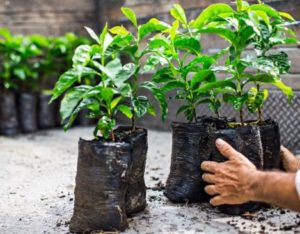Covid-19: Impact of the Pandemic on the Coffee Production Chain (Part 1)
The pandemic (COVID-19) will have a global impact on the coffee sector, with short-, medium- and long-term effects, involving the entire supply chain from production to international trade to coffee consumption.

In addition to being a dramatic public health crisis with a significant impact on economies around the world, the coronavirus pandemic represents a further challenge to the coffee sector which was already suffering a prolonged period of stagnant production and low prices. Although governments are implementing policies to save lives and mitigate economic damage, a global economic recession is now certain with an initial rapid decline in economic growth and an increase in unemployment.
The scenario envisaged by the International Monetary Fund (IMF) indicates a sharp drop in gross domestic product in 2020 and a subsequent recovery phase, the size of which will depend on the actions taken by various governments and on the return of consumer confidence.
According to a recent report published by the International Coffee Organization (ICO), there is a strong correlation between the gross domestic product in the main industrialized countries and the demand for coffee.
We examine the potential risks, how operators are responding and the possible future developments in this sector.
Impact on production and international trade
About 80% of the coffee in the world is produced by 25 million small farmers, and 125 million people depend on the collection activity for their livelihood. Even before this crisis, the lack of investment in modernization and the impact of climate change represented serious risks for the sustainability of the sector.
Medium and small farmers were already having difficulty covering operating costs. The decrease in prices in recent years has made their livelihood increasingly difficult.
For example, Brazil, the main coffee-producing country, has about 264,000 plantations of which 72% have an area of less than 20 hectares, 16% are between 20 and 50 hectares and 12% have over 50 hectares. The level of mechanization is low and about 70% of the coffee is handpicked by two million people employed seasonally.
The main risk is therefore the possible shortage of manpower due to the spread of the virus and the measures of lockdown.
The consequent delay or postponement of orders by consumer countries could cause the definitive closure of many farms with the consequent destruction of entire local coffee-based economies.
The latest data from the bulletins of some producer countries, already indicate a strong reduction in requests in March/April 2020, especially from Asia and Europe.
These data are offset by news of an acceleration of orders and a sudden increase and fluctuation in prices due to the immediate reaction of some major coffee importers in an attempt to stockpile reserves for fear of a blockage in the collection and export.
To date, data from the main producing countries indicate an increase in global requests from Indonesia, and a reduction from Vietnam, Colombia, and India.
Other importers reported a sudden increase in requests from Brazil coming from large US and European coffee roasters.
However, for a more in-depth analysis of the effect on prices, we must wait a few months, since the variation in exports of the producing countries also depends on changes in the requests from individual countries.

Logistically, the global pandemic has prompted governments around the world to impose severe restrictions on the movement of people in an attempt to stem the spread of the virus. Even if the goods continue to travel, the risks may result in delays, reduction in shipments and less space available in the containers.
In fact, restrictions on the movement of people may make it difficult for companies to find enough truckers and shipping crew.
The International Coffee Organization (ICO) also reports the risk of monetary devaluations of currencies linked to the coffee-producing countries and a collapse in investment. As a consequence, less attention would be given to crop maintenance and post-harvest protocols.
Read also Part 2: Impact of the Pandemic on Coffee Consumption
Read also Part 3: Impact of the Pandemic on the Coffee Sector. Future Changes and Innovations



